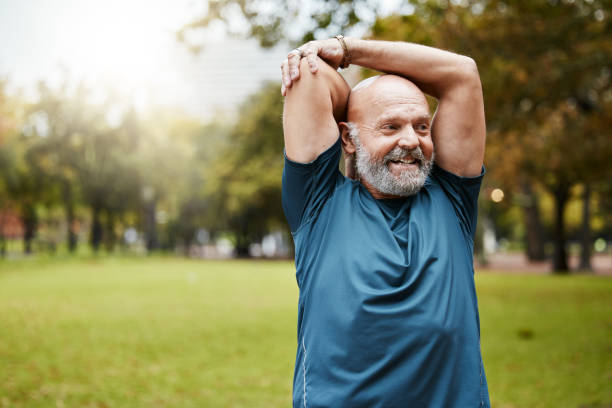Resistance Training at Home for Seniors: A Comprehensive Guide

As we age, maintaining physical fitness becomes increasingly important for overall health and well-being. Incorporating cardio exercise along with resistance training is essential for a balanced workout routine. Resistance training is a highly effective way for seniors to build muscle mass, improve bone density, and maintain a healthy body weight. This guide will provide you with everything you need to know about resistance training at home for seniors, focusing on major muscle groups and offering practical exercises to incorporate into your routine.

The Importance of Resistance Training for Seniors
Resistance training, also known as strength training, involves exercises that cause muscles to contract against an external resistance. Strength training exercises are particularly important for seniors as they help increase muscle mass, improve balance, and prevent falls. This type of exercise is crucial for older adults because it helps:
-
Build Muscle Mass: As we age, we naturally lose muscle mass. Resistance training can help counteract this loss and even build new muscle.
-
Improve Bone Density: Weight-bearing exercises stimulate bone growth, reducing the risk of osteoporosis and fractures.
-
Maintain Healthy Body Weight: Increased muscle mass boosts metabolism, helping to manage weight more effectively.
-
Enhance Physical Function: Strengthening muscles improves balance, coordination, and mobility, making everyday activities easier and reducing the risk of falls.
-
Boost Mental Health: Regular physical activity, including resistance training, has been shown to improve mood and cognitive function.

Major Muscle Groups to Target
Effective resistance training should target the major muscle groups, including:
-
Upper Body: Chest, back, shoulders, arms
-
Core Muscles: Abdominals, obliques, lower back
-
Lower Body: Quadriceps, hamstrings, glutes, calves
Incorporating exercises that work both the upper and lower body, such as squats and dumbbell squats, is crucial for building overall strength, stability, and balance, especially for seniors.
Essential Resistance Training Exercises
Here are some resistance training exercises suitable for seniors. These exercises can be performed with light weights, resistance bands, or even body weight, making them perfect for at-home workouts.
Multi-joint exercises, which engage multiple joints and muscle groups, are highly effective for building strength throughout the whole body and have a high functional carry-over to day-to-day activities.
Upper Body Exercises
-
Chest Press:
-
Starting Position: Sit in a sturdy chair with your back straight and feet flat on the floor.
-
Movement: Hold a pair of light weights or resistance bands at chest level with palms facing outward. Push the weights forward until your arms are fully extended, then slowly lower them back to the starting position.
-
Muscles Targeted: Chest, shoulders, triceps.
-
-
Shoulder Press:
-
Starting Position: Sit or stand with feet hip-width apart, holding light weights at shoulder level with palms facing forward.
-
Movement: Press the weights upward until your arms are fully extended, then slowly lower them back to shoulder level.
-
Muscles Targeted: Shoulders, upper arms.
-
-
Bicep Curls:
-
Starting Position: Stand with feet shoulder-width apart, holding a pair of light weights with arms fully extended and palms facing forward.
-
Movement: Curl the weights towards your shoulders, then slowly lower them back to the starting position.
-
Muscles Targeted: Biceps.
-
Core Exercises
-
Seated Leg Lifts:
-
Starting Position: Sit in a sturdy chair with your spine straight and feet flat on the floor.
-
Movement: Lift one leg at a time, keeping it straight, and hold for a few seconds before lowering it back down. Alternate legs.
-
Muscles Targeted: Lower abdominals, hip flexors.
-
-
Standing Side Bends:
-
Starting Position: Stand with feet shoulder-width apart, holding a light weight in one hand.
-
Movement: Bend sideways at the waist towards the weight, then return to the starting position. Repeat on the opposite side.
-
Muscles Targeted: Obliques.
-
-
Torso Twists:
-
Starting Position: Sit in a sturdy chair with your spine straight and feet flat on the floor.
-
Movement: Hold a light weight or medicine ball at chest level and twist your torso to the left, then to the right, engaging your core muscles throughout.
-
Muscles Targeted: Abdominals, obliques.
-
Lower Body Exercises
-
Squats:
-
Starting Position: Stand with feet shoulder-width apart, arms extended in front of you for balance.
-
Movement: Lower your body into a squat position by bending your knees and hips, keeping your spine straight and feet flat. Return to the starting position.
-
Muscles Targeted: Quadriceps, hamstrings, glutes.
-
-
Heel Raises:
-
Starting Position: Stand with feet shoulder-width apart, holding onto a sturdy chair for balance.
-
Movement: Raise your heels off the floor, standing on your toes, then slowly lower them back down.
-
Muscles Targeted: Calves.
-
-
Leg Press:
-
Starting Position: Sit in a sturdy chair with your back straight and feet flat on the floor.
-
Movement: Extend one leg out straight and press it forward, then slowly return it to the starting position. Repeat with the opposite leg.
-
Muscles Targeted: Quadriceps, hamstrings.
-

Incorporating Resistance Bands
Resistance bands are versatile tools for resistance training, especially for seniors. They provide adjustable resistance levels and are easy to use at home. Here are a few exercises using resistance bands:
-
Resistance Band Rows:
-
Starting Position: Sit in a sturdy chair with your feet flat on the floor, holding the resistance band with both hands.
-
Movement: Pull the band towards your chest, squeezing your shoulder blades together, then slowly return to the starting position.
-
Muscles Targeted: Upper back, shoulders.
-
-
Resistance Band Leg Press:
-
Starting Position: Sit in a sturdy chair with your back straight and feet flat on the floor.
-
Movement: Loop the resistance band around one foot and hold the ends. Press your leg forward against the band’s resistance, then slowly return to the starting position. Repeat with the opposite leg.
-
Muscles Targeted: Quadriceps, hamstrings.
-
Developing a Balanced Exercise Program
A well-rounded exercise program for seniors should include resistance training exercises for all major muscle groups, balance exercises, and cardio activities. Incorporating cardio exercise along with resistance training is crucial for a balanced workout routine, as it helps prevent obesity and improves overall health and fitness levels. Here’s a sample weekly workout routine:
-
Monday: Upper body resistance training + 20 minutes of walking.
-
Tuesday: Lower body resistance training + balance exercises.
-
Wednesday: Core exercises + 20 minutes of cycling or swimming.
-
Thursday: Upper body resistance training + 20 minutes of walking.
-
Friday: Lower body resistance training + balance exercises.
-
Saturday: Core exercises + 20 minutes of dancing or light aerobics.
-
Sunday: Rest or light stretching.
Tips for Safe and Effective Resistance Training
-
Maintain Good Posture: Keep your spine straight and shoulders back during exercises to prevent injury and ensure proper form.
-
Use Light Weights: Start with light weights or resistance bands and gradually increase the resistance as your strength improves.
-
Focus on Form: Proper form is more important than the amount of weight lifted. Ensure each movement is controlled and precise.
-
Warm-Up and Cool Down: Begin each session with a warm-up and end with a cool-down to prepare your muscles and prevent injury.
-
Listen to Your Body: If you experience pain or discomfort, stop the exercise and consult a healthcare professional or physical therapist.
-
Stay Hydrated: Drink plenty of water before, during, and after your workouts.
Working with a Personal Trainer
If you're new to resistance training or have specific health concerns, consider working with a personal trainer. A trainer can:
-
Develop a customized exercise program tailored to your needs and abilities.
-
Ensure you're using proper form and technique.
-
Provide motivation and support to help you stay on track.
The QuickHIT Apex Machine
Another helpful option to highlight is the QuickHIT Apex machine. Using Robotically Controlled Resistance, the QuickHIT Apex machine is a safe, in-home machine that is designed for resistance based training. With the QuickHIT Apex machine, safe, effective workouts can be achieved in as little as 20 minutes.
Conclusion
Resistance training at home is an excellent way for seniors to maintain physical fitness, improve muscle strength, and enhance overall health. By targeting major muscle groups with resistance exercises, older adults can build muscle mass, improve bone density, and maintain a healthy body weight. Remember to start slowly, focus on proper form, and listen to your body. With consistency and dedication, you can enjoy the many benefits of resistance training and lead a healthier, more active life.
Embrace this new exercise regimen, and you'll find yourself stronger, more balanced, and more confident in your physical abilities. Whether you're using light weights, resistance bands, or body weight exercises, the key is to stay active and make resistance training a regular part of your routine. Stay committed, and you'll reap the rewards of a healthier, fitter body at any age.

